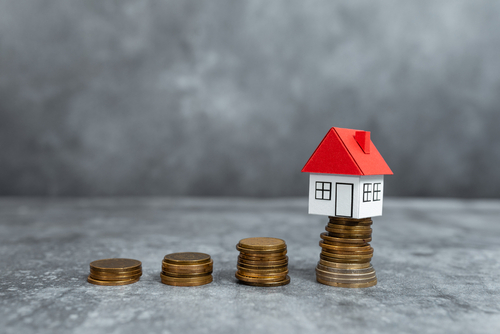Earlier this month ARLA addressed a paradox that poses a very real threat to the letting sector: how to remain a critically important provider of competitively priced housing while conforming to recent energy conservation legislation.
ARLA called upon landlords to think ‘green’, claiming that 14.5% of landlords admitted that at least one of their properties is currently in the bottom two Energy Performance Certificate (EPC) categories.
So, what are the reasons for ensuring that your property is as green as possible?
1. Helping future generations
2. Preserving the world’s resources
3. Improving the nations’ net housing stock
4. Making occupants more comfortable and reducing their outgoings
5. Providing the Government with the ammunition to meet its obligations
Fine. But what’s in this for landlords?
Saving the planet’s resources is in the interest of everyone’s grandchildren, of course. But there are few suggestions about how to fund these improvements to housing built anything up to 125 years ago.
Most rental property was built before the notions of cavity walls, double glazing and thermo-efficient boilers had crossed anyone’s mind.
With today’s landlords facing flat property prices, impossibly punitive bank lending criteria, a constrained mortgage market, low returns on investment and a bleak economic outlook for the next decade, many have unsurprisingly pushed the green agenda to the bottom of their list.
A typical package of improvements to bring a terrace Victorian 2/3-bed urban-centre unit up to ‘green’ standard could well add up to 20-30% of its entire market value. But while there is plenty of serious research going on into how to bring these older types of properties economically up to scratch, in my view not one has so far managed to crack it.
Many landlords are caught in the middle, because if they don’t upgrade their properties or do everything suggested in the EPC, their properties will be banned from the market. If they spend to improve and comply, even supposing that they have or can find the funds, there will be no return on their investment for years.
The last resort, of recouping money by selling at a modest profit, is untenable these days. The greenest house in the street fetches little or even no more than the least efficient. With present high deposits and mortgage terms, buyers (especially first-time buyers) can’t afford the luxury of a social conscience. Potential first-time buyers find they might be caught by their lenders’ requirements to upgrade an older property.
So who can afford improvements? Where are the necessary tens of millions of pounds to effect these changes to come from?
Out of landlords’ margins? If landlords can’t make a fair return they will simply find a new home for their money where they can, depressing the market even further with low-price ‘fire sales’.
Remaining landlords would have to persuade their tenants to pay for new boilers and other changes, through higher rent. A lot of landlords think this will actually blight rental properties.
From Government or local authority grants? Public spending cuts mean that even the financial support which landlords had to fight for is now no longer available. The typical response to an improvement application is palms thrust heavenward. The money isn’t there.
From increased rental income? With three million unemployed, zero economic growth, benefit crack-downs and soaring student debt, increasing rentals would just force tenants on to the streets or into greater dependency on the authorities. Landlords know the rental value of a property to within very small tolerances anyway. The market simply won’t stand higher rentals.
The return on investment simply isn’t there.
It’s an incredibly complex subject which the Government has reduced to sound bites. The basic issue is that landlords will have to spend money for a tenant’s benefit (i.e. lower energy bills). This isn’t a business-like argument.
It seems the only way to force landlords to make rented property more energy efficient is to link the EPC values to council tax – the lower the EPC rating, the higher the council tax. The problem with this plan is that it would be political suicide. It would wreck the private rental sector, in a very fragile climate, where the nation is manifestly failing to replace its housing stock with new-builds and desperately needs a healthy rental market.
That is not the landlords’ problem but the Government’s: if the legislators want landlords to ‘go green’, they will have to make it make it worth their while. Nobody seems to have come up with a suitable solution so far. Perhaps tax concessions are the answer?
William Jordan is managing director of residential lettings agency Jordan’s










.png)




Comments
Interesting piece - valid points. All tenants want to reduce outgoings. I'm all for making our properties greener
When I got to the 5 things to make your property "green" was when I lost concentration and went and got my coat!
This guy must have lots of spare time......